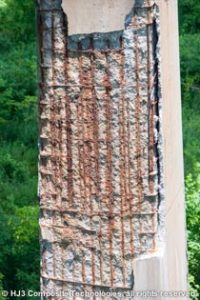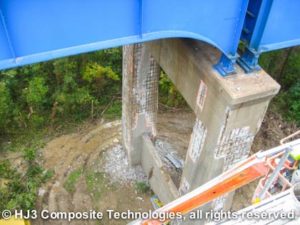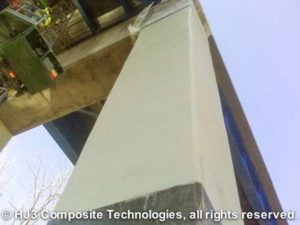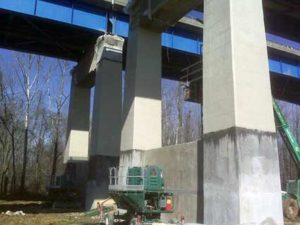Reviving America's Bridges: Carbon Fiber Solutions for Corroded Columns
According to the American Society of Civil Engineers (ASCE) 2013 Report Card for America's Infrastructure, over 66,000 bridges across the United States are currently classified as structurally deficient. To bring these bridges up to a safe condition by 2028, an estimated $76 billion in funding is needed. However, with limited budgets and growing infrastructure demands, governments at all levels are exploring innovative alternatives. In a compelling example, a heavily used Kentucky Department of Transportation (DOT) bridge, featuring more than 60 corroded columns, opted for HJ3’s advanced carbon fiber technology. This solution not only proved to be cost-effective but also sustainable, ultimately saving the project nearly 50% compared to full replacement.The Pressure on Bridges and Overpasses
Bridges and overpasses face continuous stress from vehicle vibrations, which can lead to micro-cracks in reinforced concrete structures. Over time, these cracks allow moisture and oxygen to penetrate, causing corrosion of the steel reinforcement. As the rebar rusts and expands during freeze-thaw cycles, it exerts pressure that exceeds the strength of the surrounding concrete. The Kentucky bridge had over 60 corroded columns, with sections of the concrete overlay spalling and crumbling—posing a serious risk to its structural integrity. With budget constraints limiting options, the DOT turned to HJ3’s carbon fiber system as a reliable and long-term repair solution.Repairing with HJ3's Carbon Fiber System
The repair process began with removing the damaged outer layer using chipping hammers. The exposed rebar was carefully cleaned and protected, while wooden forms were constructed around each column to hold in-place high-strength grout. Once the columns were restored, they were prepared for the application of carbon fiber. The HJ3 CivilTM system was used to wrap the columns, providing additional strength and durability. A protective topcoat was then applied, ensuring long-term resistance to environmental damage. Thanks to this method, the columns were brought back to their original shear and tensile capacity.Reducing Disruption and Saving Costs
Bridge repairs often cause inconvenience for drivers and workers alike. Full replacements typically require extended closures, leading to traffic congestion, delays, and safety concerns. By choosing HJ3’s carbon fiber system instead of replacing the columns, the DOT minimized disruption. The repair work required only short road closures, reducing both time and hassle. Moreover, the corrosion-resistant nature of carbon fiber means no future maintenance will be needed. This project saved the DOT an impressive 50% in costs compared to traditional replacement methods.Considering Carbon Fiber for Bridge Repairs
Maintaining our infrastructure is essential for public safety and economic stability. If your bridge is showing signs of wear and you’re looking for durable, cost-effective solutions, HJ3’s carbon fiber systems offer a smart alternative. Contact our project managers today to learn more about how we can help restore your bridge efficiently and sustainably.



Automatic Paper Lunch Box Machine
Wenzhou Huaze Machinery Co.,Ltd , https://www.multihz.com